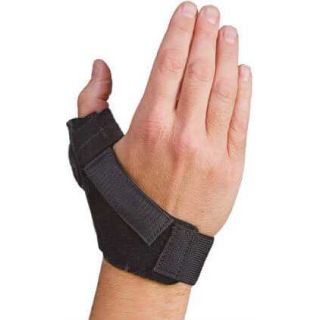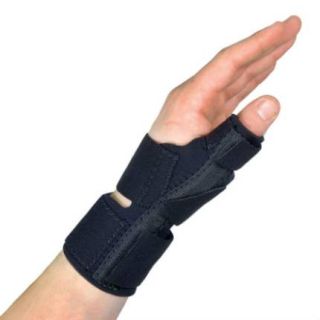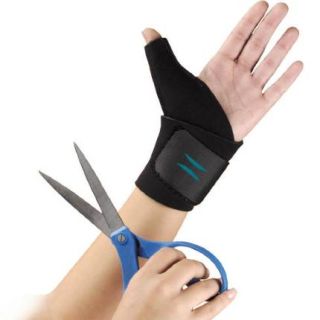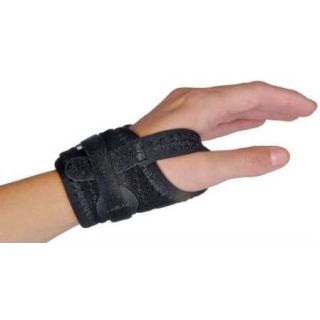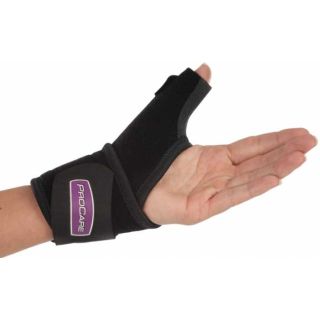Guarding Precision: The Significance of Volleyball Thumb Braces in the Game
Volleyball is a sport that demands precision and control, and the hands, particularly the thumbs, play a pivotal role in executing accurate passes, sets, and serves. Given the high-impact nature of the game, players are susceptible to thumb injuries that can compromise their performance and long-term hand health. Volleyball thumb braces, thumb support, and braces designed specifically for volleyball are essential tools in mitigating these risks and ensuring players can maintain their agility and precision on the court. This essay delves into the importance of these thumb protection accessories, exploring their role in injury prevention, performance enhancement, and overall well-being in the world of volleyball.
The Thumb's Crucial Role in Volleyball:
1. Precision in Ball Handling:
Volleyball requires precise ball handling, and the thumbs are instrumental in executing accurate passes, sets, and serves. The thumb's opposition to the other fingers allows for a controlled grip on the ball, facilitating the finesse needed for various plays. The repeated and forceful actions involved in these maneuvers make the thumbs susceptible to injuries.
2. Vulnerability to Hyperextension:
Hyperextension of the thumb, where the joint is forced beyond its normal range of motion, is a common injury in volleyball. This can occur during aggressive plays, blocks, or when attempting to dig a powerful spike. Hyperextension injuries not only cause immediate pain and discomfort but can also lead to long-term joint instability if not addressed.
The Role of Volleyball Thumb Braces:
1. Injury Prevention:
Foremost among the reasons volleyball players use thumb braces is injury prevention. Volleyball thumb braces act as a protective shield, stabilizing the thumb joint and reducing the risk of hyperextension injuries. The support provided by these braces is especially crucial during intense plays, ensuring that the thumb remains in its natural range of motion and minimizing the risk of overextension.
2. Stabilization and Compression:
Volleyball thumb braces are designed to provide stabilization and compression to the thumb joint. The compression helps reduce swelling, while the stabilization prevents excessive movement that could lead to injury. This dual action contributes to a player's confidence in executing precise movements without the fear of compromising thumb health.
3. Rehabilitation and Post-Injury Support:
For players recovering from thumb injuries or undergoing rehabilitation, volleyball thumb braces offer essential support. The compressive nature of these braces aids in reducing inflammation, promoting blood circulation, and providing the necessary stability during the recovery phase. Volleyball thumb braces become a valuable tool in the gradual return to full functionality.
Thumb Support for Volleyball: Types and Features
1. Neoprene Thumb Sleeves:
Neoprene thumb sleeves are a common type of thumb support used in volleyball. These sleeves are made from flexible neoprene material that provides mild compression and warmth to the thumb joint. Neoprene thumb sleeves are suitable for players seeking support during play while maintaining a full range of motion.
2. Adjustable Thumb Straps:
Adjustable thumb straps are designed to wrap around the thumb and provide customizable compression. These straps are convenient for players who prefer a more tailored fit and need the flexibility to adjust the level of support based on their individual needs. Adjustable thumb straps are often lightweight and easy to use during play.
3. Rigid Thumb Braces:
Rigid thumb braces feature a more structured design with a splint or support mechanism to limit movement. These braces are recommended for players recovering from more severe thumb injuries or those prone to chronic instability. Rigid thumb braces strike a balance between support and mobility, offering enhanced protection during high-impact plays.
Considerations for Volleyball Players:
1. Proper Sizing and Fit:
Selecting the right size and ensuring a proper fit are crucial when choosing volleyball thumb braces or thumb support. Ill-fitting braces may not provide the necessary support and can potentially cause discomfort or hinder performance. Players should follow manufacturer guidelines for sizing and consider their individual thumb dimensions.
2. Breathability and Moisture Management:
Volleyball is an intense sport that often leads to increased perspiration. Choosing thumb braces or supports with breathable materials and effective moisture-wicking properties is essential to prevent discomfort and skin irritations during play. Proper ventilation ensures that players can focus on their game without distractions.
3. Flexibility and Range of Motion:
While support is paramount, volleyball players also value thumb braces that allow for a full range of motion. Thumb braces should provide the necessary stability without restricting movements crucial for ball handling, setting, and serving. Finding a balance between support and freedom of movement is key for optimal performance.
DME-Direct's volleyball thumb braces, thumb support, and braces designed specifically for volleyball emerge as essential tools for players seeking to safeguard their thumbs and maintain precision in their game. The thumbs' critical role in ball handling and the vulnerability to hyperextension injuries make protective measures imperative in preventing injuries and promoting overall well-being. The variety of thumb support options available allows players to choose based on their specific needs, whether it be injury prevention, post-injury support, or enhanced stability during play. As volleyball continues to be a popular and competitive sport, the importance of thumb protection tools becomes increasingly evident, ensuring that players can fully engage in the game while minimizing the risks associated with the demands of this dynamic and high-impact sport.

